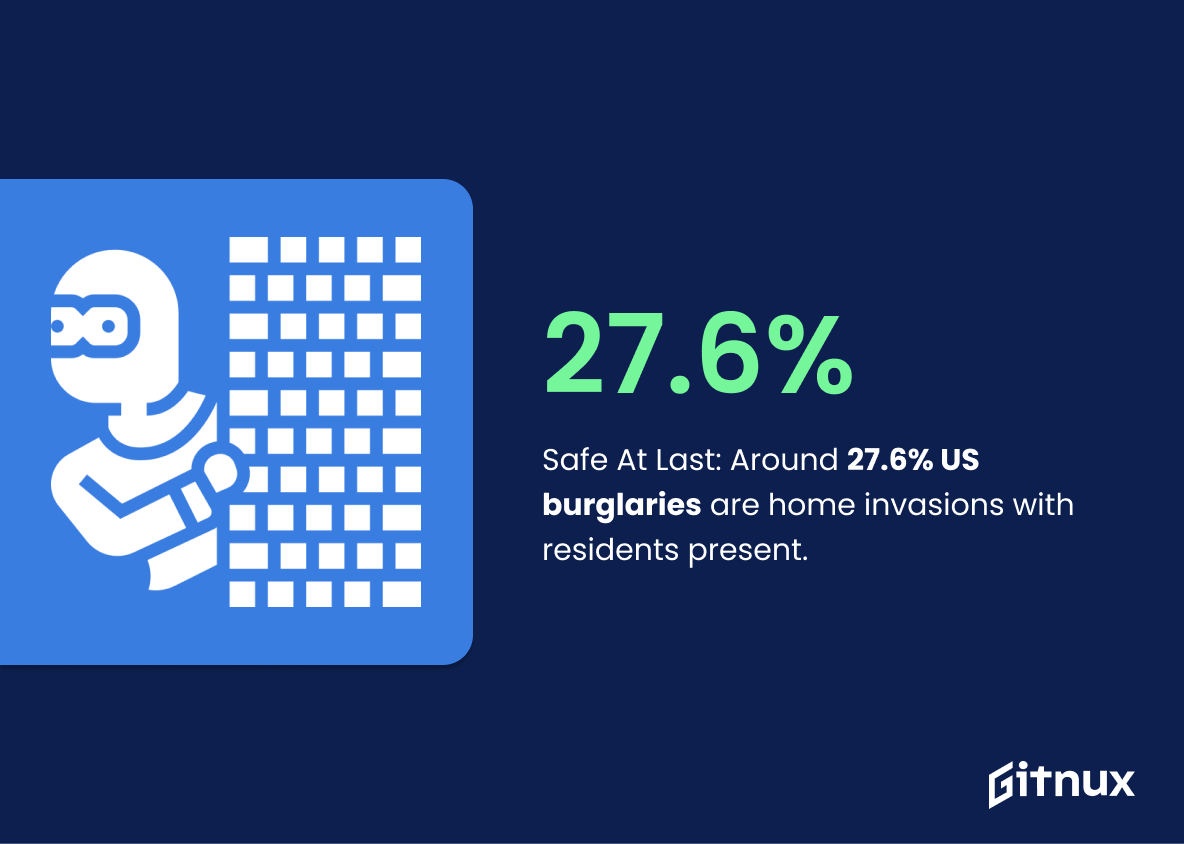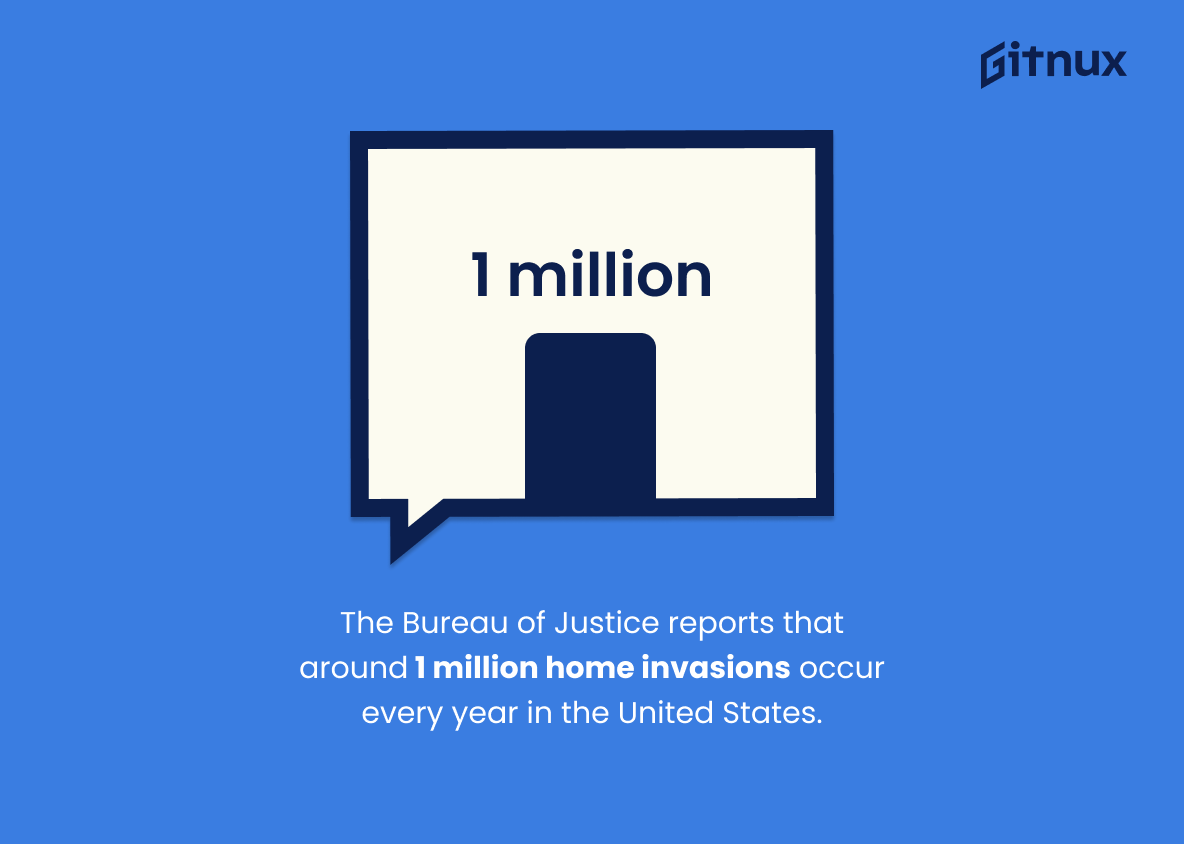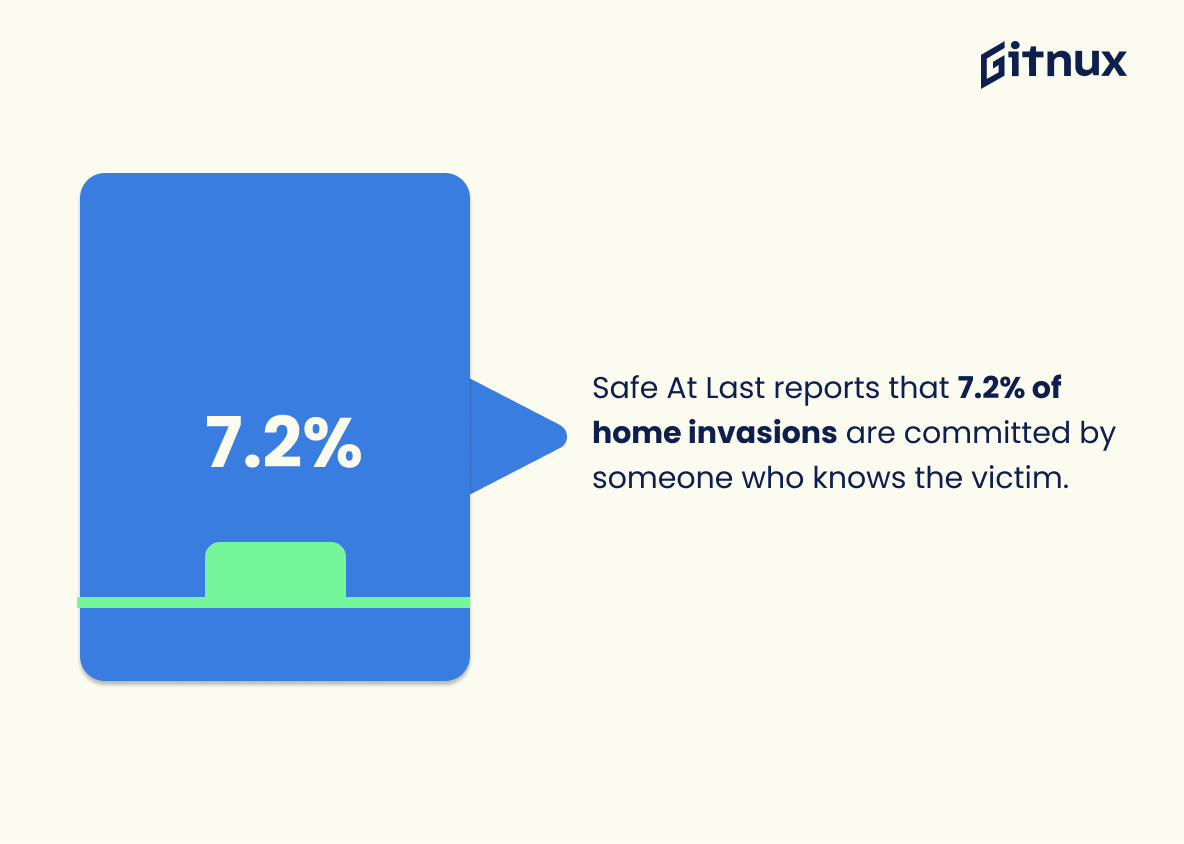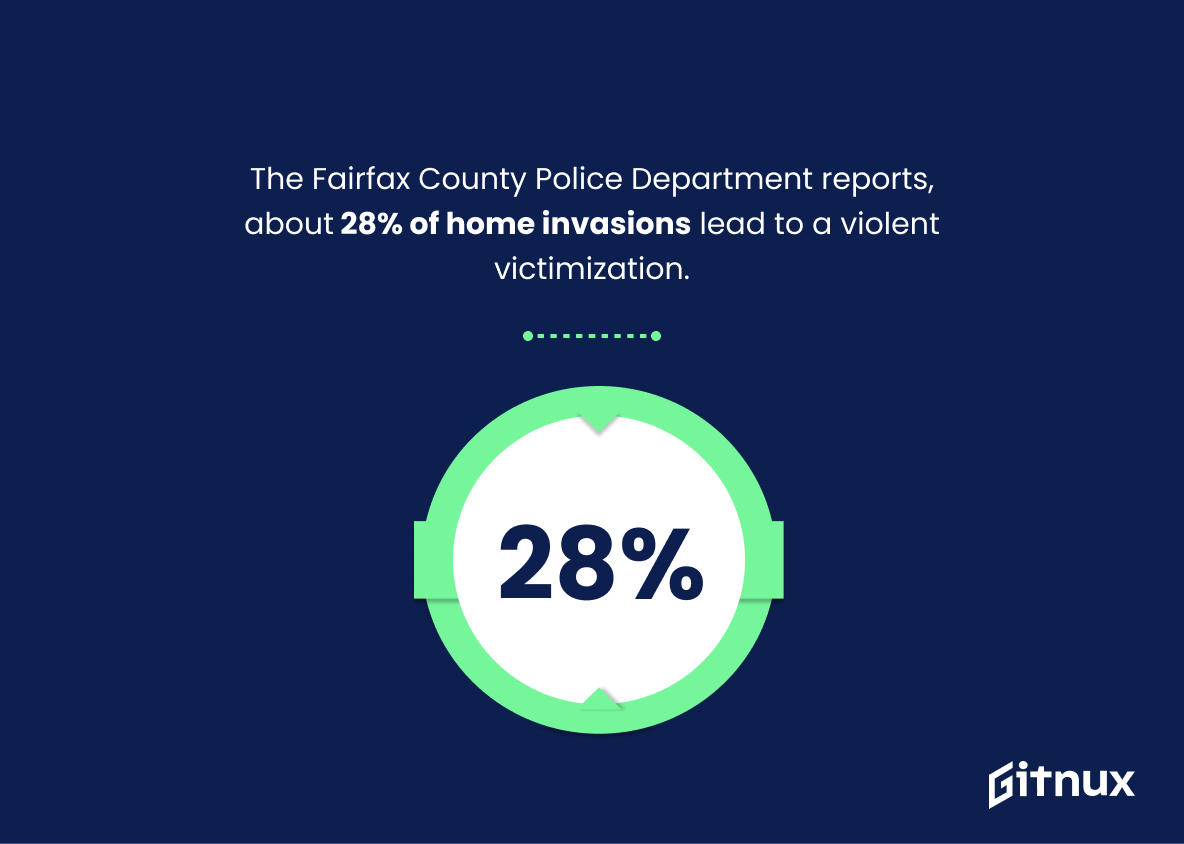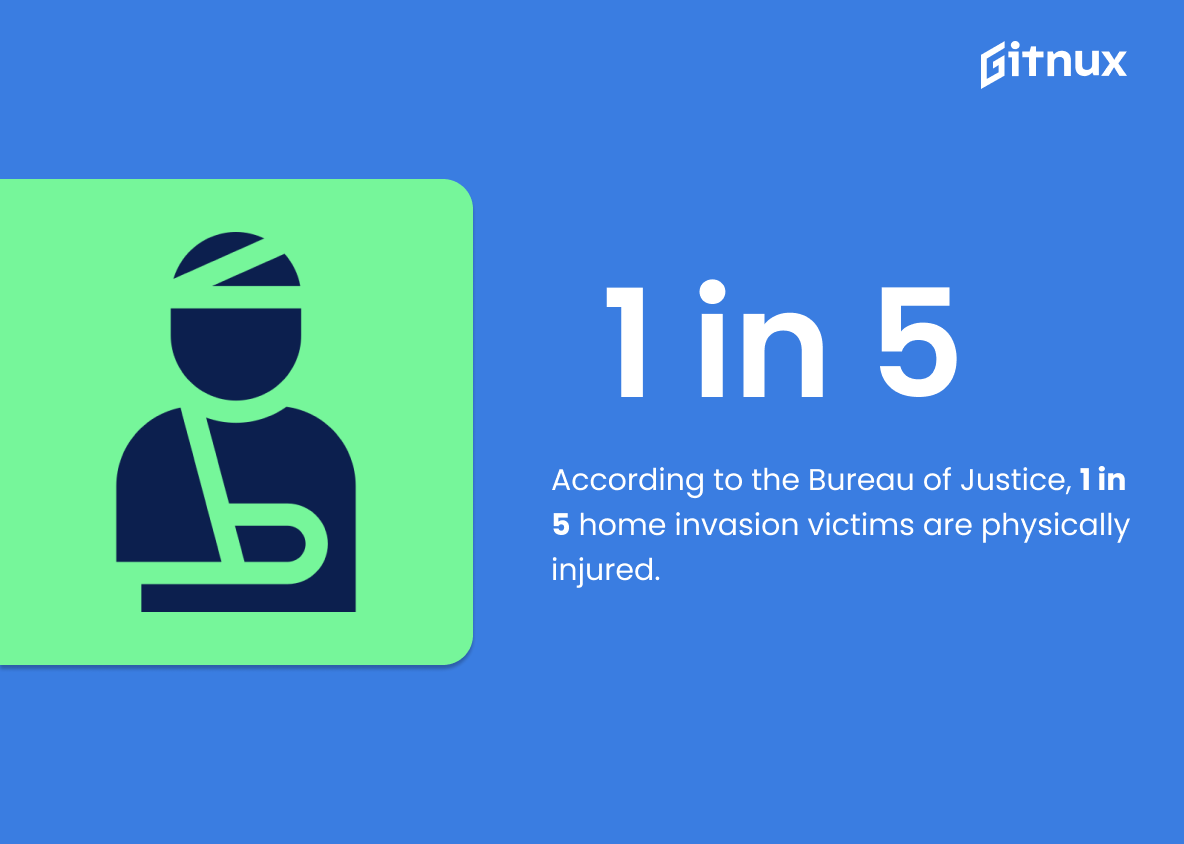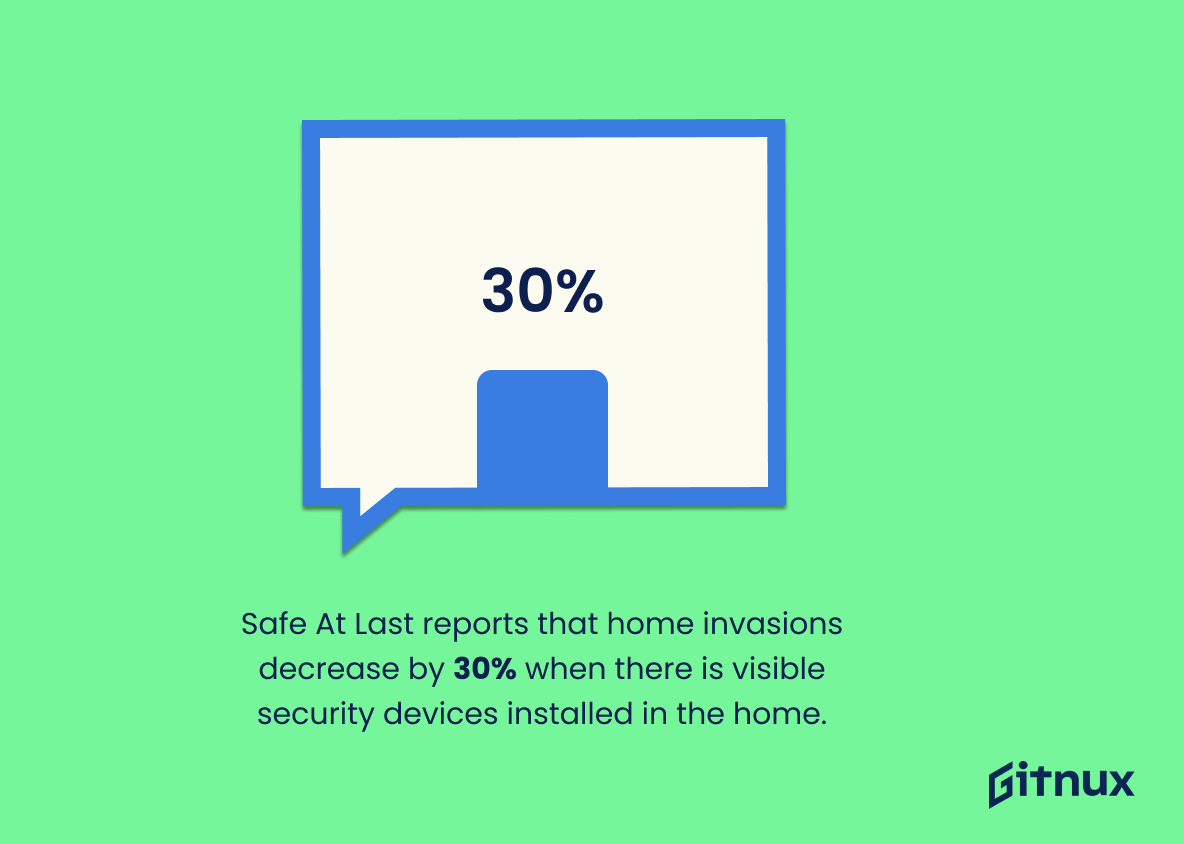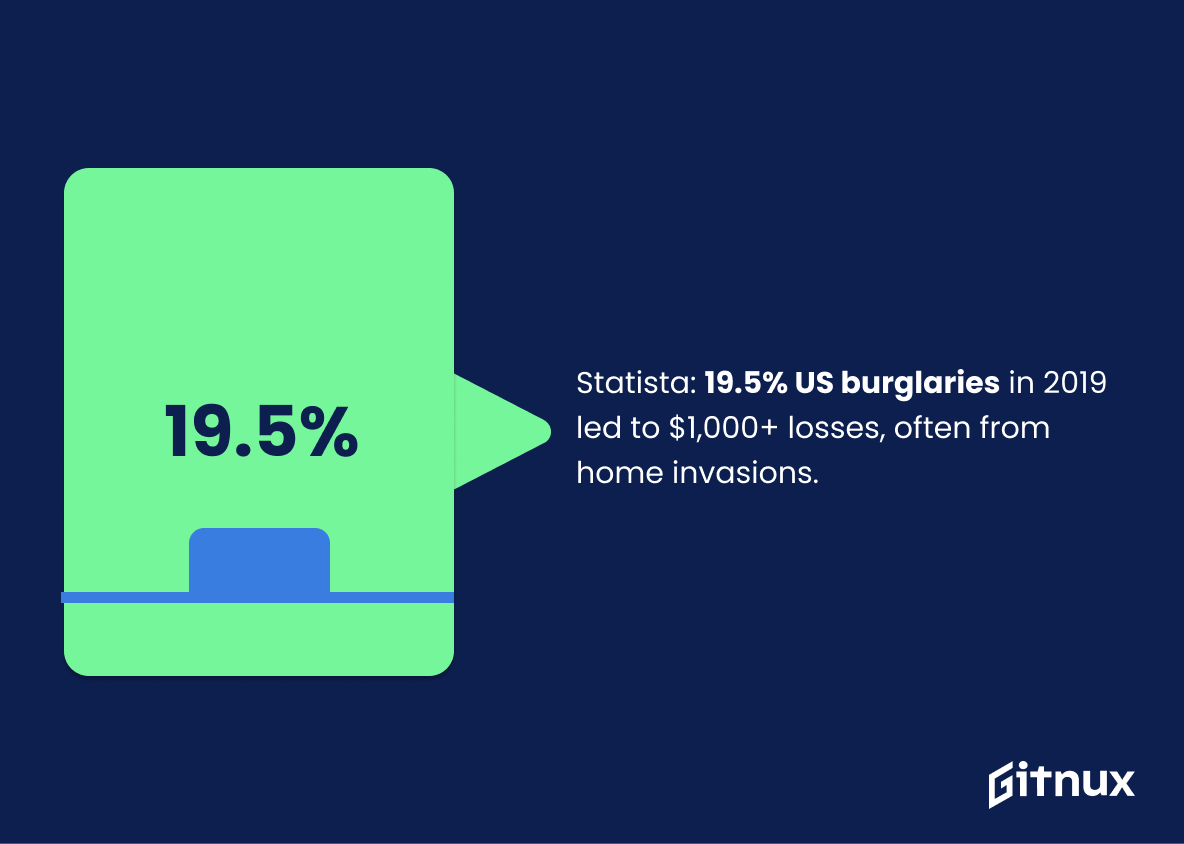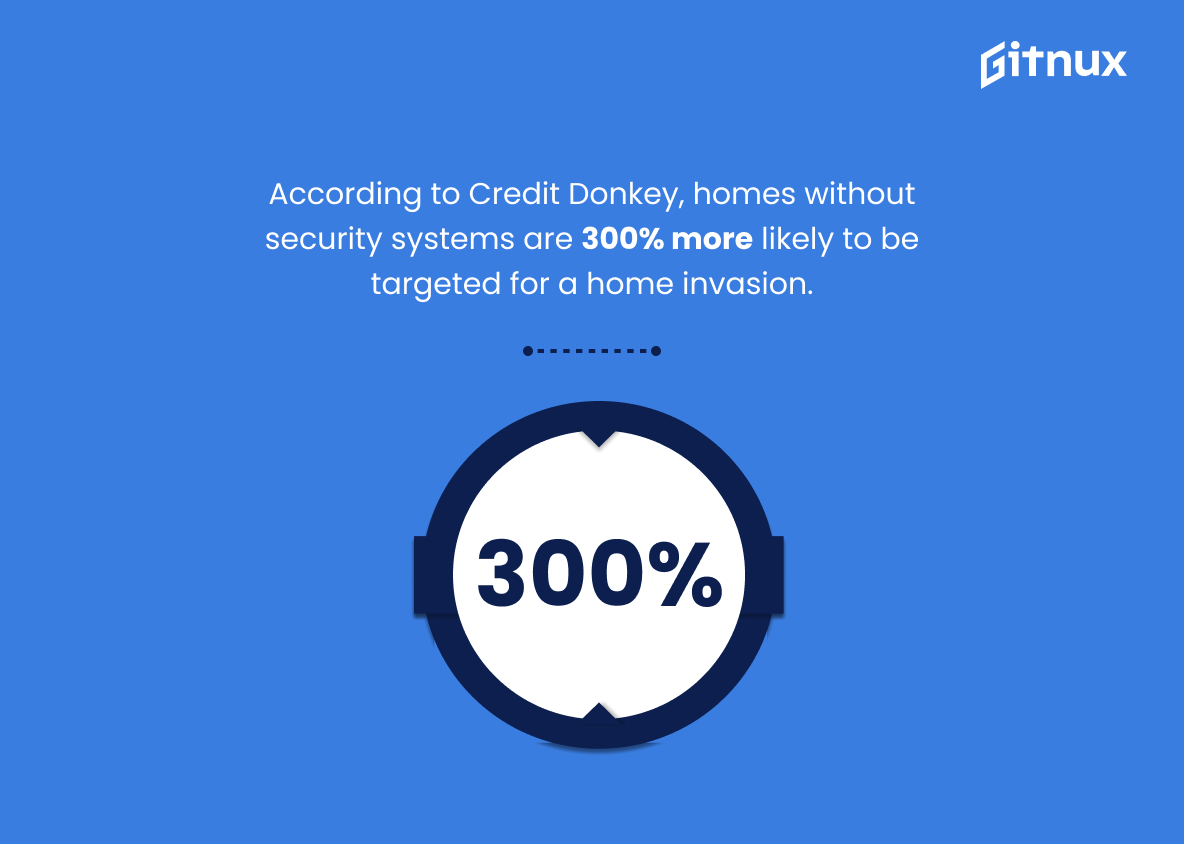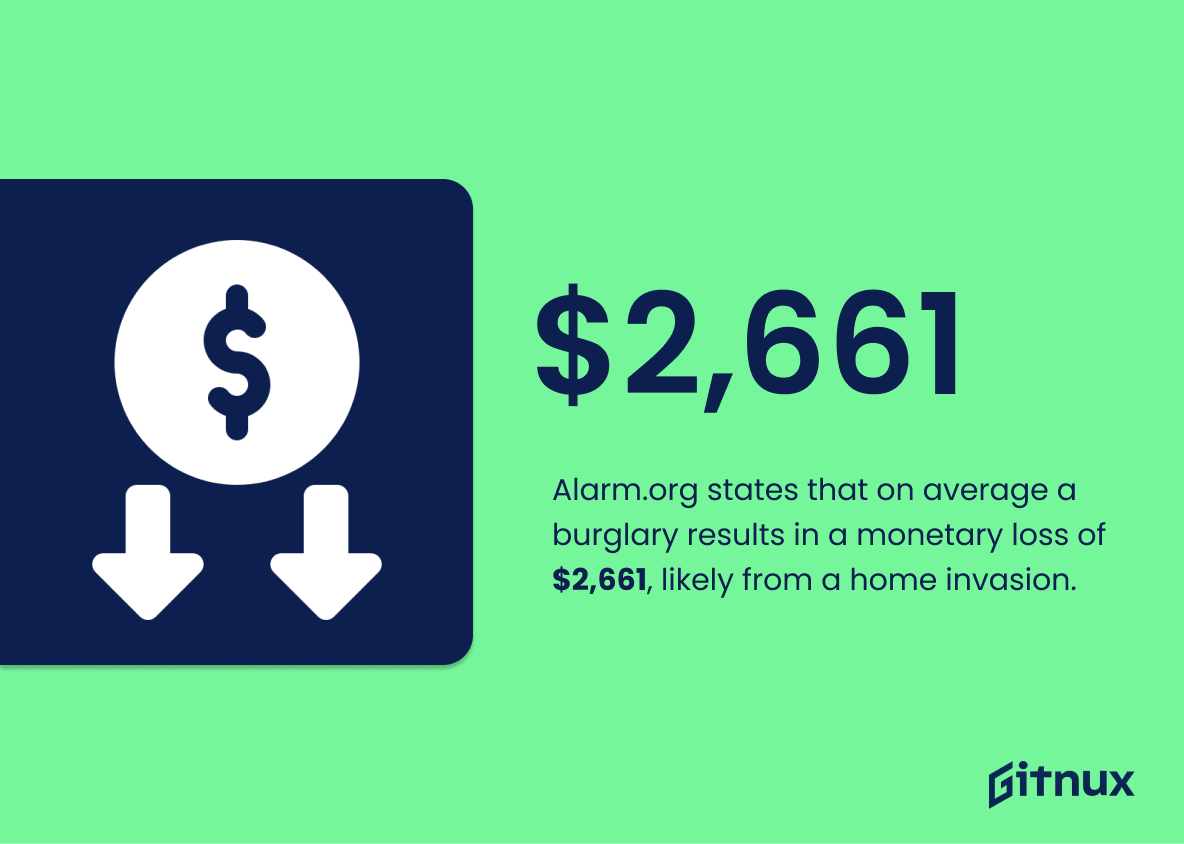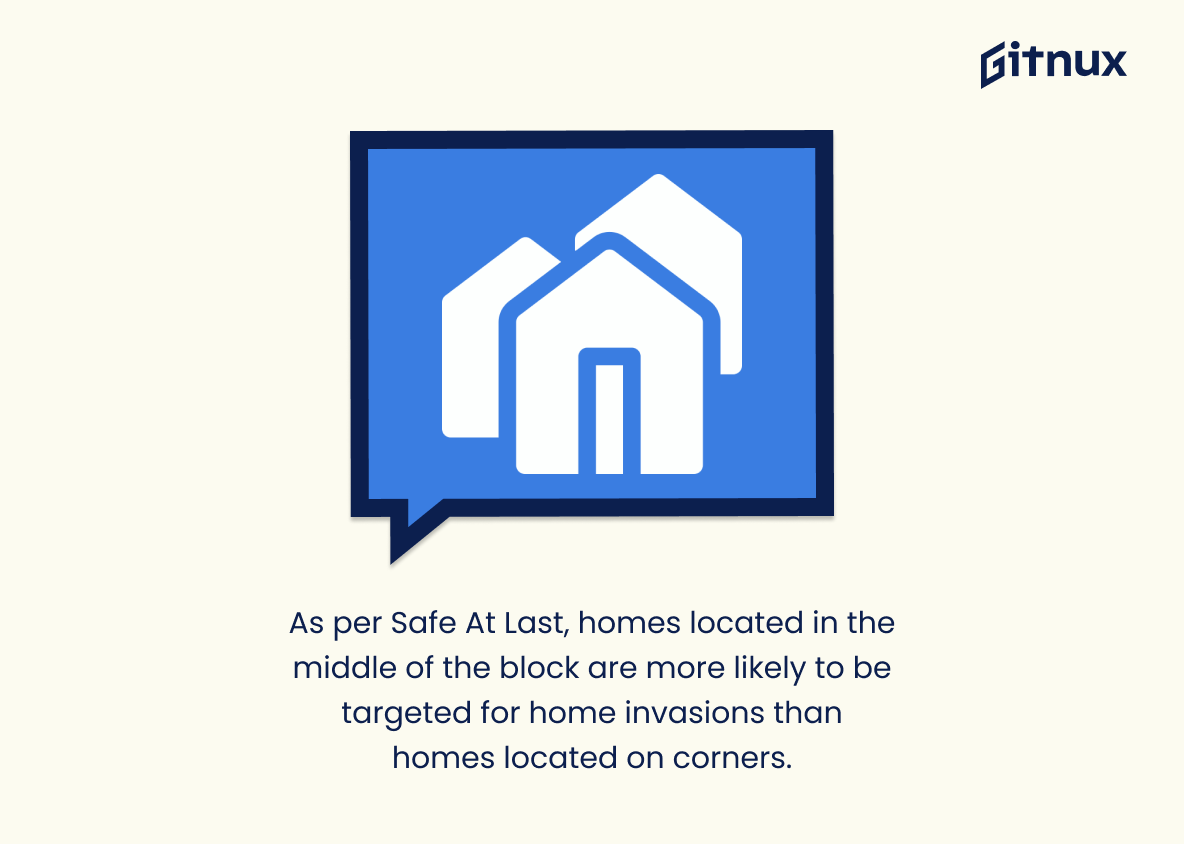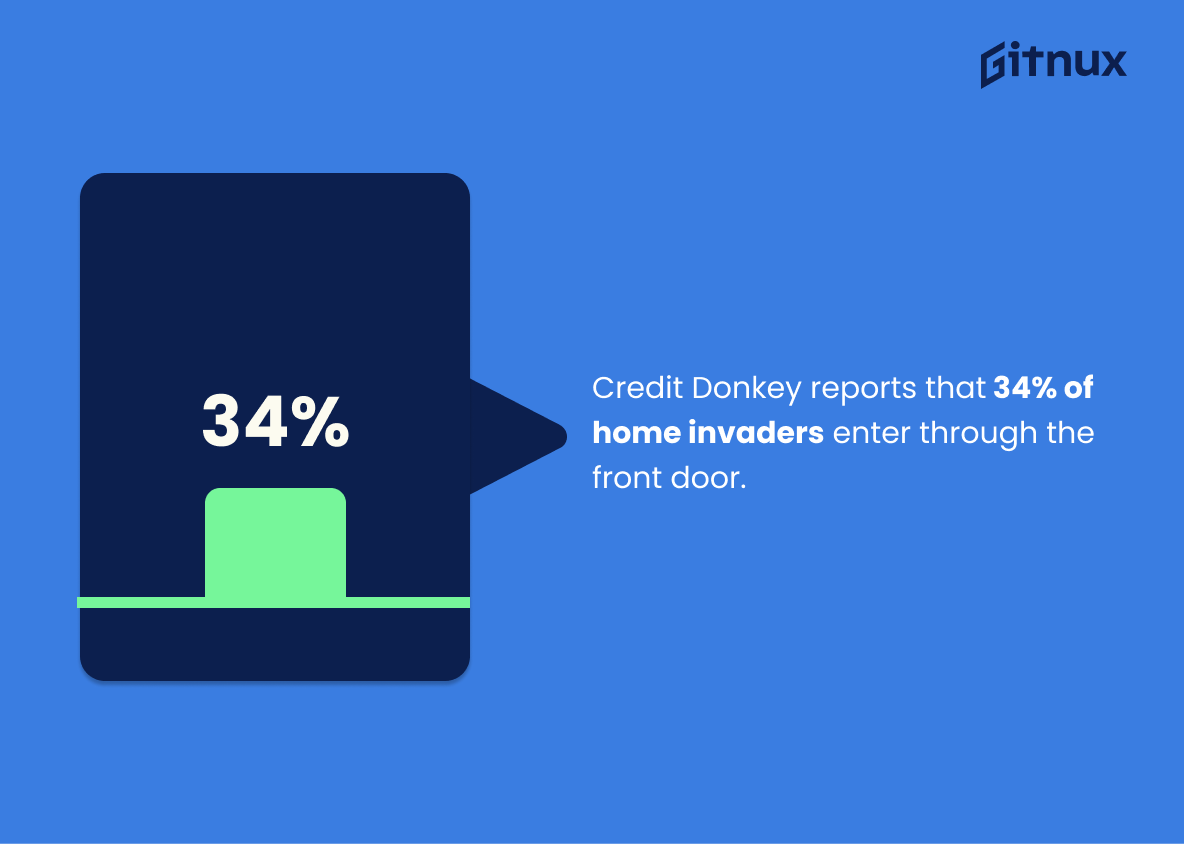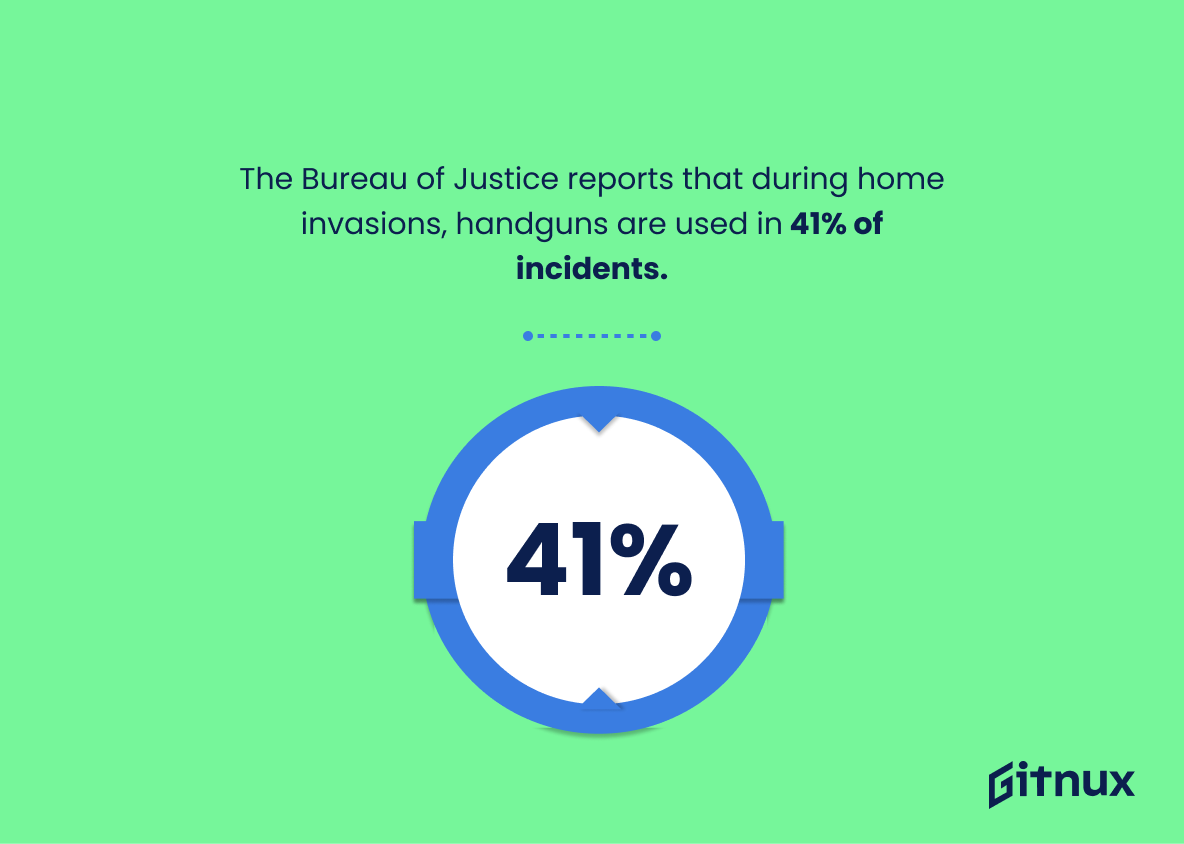Home is where we retreat for safety and solace, where we unwind after grueling days out in the world. But how safe are our homes really? Dive with us into the often overlooked, yet alarmingly relevant world of home invasion statistics. Understanding these figures can provide crucial insights, empowering us to better protect our havens from unwanted intrusions. Our in-depth exploration aims to inform, educate, and ultimately, contribute to the creation of safer homes nationwide.
The Latest Home Invasion Statistics Unveiled
According to Safe At Last, approximately 27.6% of burglaries in the United States can be categorized as a home invasion because the residents are present during the crime.
Painting a stark reality about the safety of our homes, this figure from Safe At Last offers a chilling illustration: nearly one in three burglaries in the United States can be described as a home invasion due to the home’s occupants being present during the crime. Infused with palpable relevance in a blog post about Home Invasion Statistics, this statistic underscores the critical nature of this issue. It presents an urgent call to action, reinforcing how important it is not only to understand the frequency of home invasions, but also to take necessary precautions to protect our homes and loved ones. By weaving in this data, the blog post amplifies the gravity and immediacy of the home invasion problem, making the reader aware of its unsettling proximity to their daily lives.
The Bureau of Justice reports that around 1 million home invasions occur every year in the United States.
This captivating figure from the Bureau of Justice showcases the alarming frequency of home invasions, painting a vivid picture of the scale at which they occur yearly in the U.S. In the landscape of a blog post about Home Invasion Statistics, this statement serves as a potent illustration, empowering readers with a comprehension of the gravity and seriousness of this security concern.
It further roots the audience’s understanding in empirical information, setting the stage for more in-depth analysis of home invasion incidents. This is the numerical backbone that permits deeper dives into aspects like their geographical distribution, seasonal patterns, most likely targets, and effective preventative measures. Ultimately, it accentuates the urgency and importance of being informed and proactive about home security.
According to the Bureau of Justice Statistics, 38% of assaults and 60% of rapes occur during home invasions.
Reading the statistic provided by the Bureau of Justice Statistics, one can recognize the profound significance it holds within the context of a blog post focused on Home Invasion Statistics. A stark illumination is presented on the grim reality of home invasions not merely being intrusions on one’s personal security or possessions, but also constituting a daunting scenario for personal harm. It’s crucial to consider that nearly two-fifths of assaults and over half of rapes reported occur in these circumstances. By placing this statistic at the forefront, readers are encouraged to rethink and reinforce their home safety measures, enhancing awareness, and perhaps, even prompting policy changes or advances in home security solutions.
Safe At Last reports that 7.2% of home invasions are committed by someone who knows the victim.
In the labyrinth of home invasion statistics, the data point relayed by Safe At Last functions akin to a spotlight, ramming home the point that, alarmingly, it’s not just strangers who pose a threat. A chilling 7.2% of home invasions are committed by someone familiar to the victim, an unsettling revelation that urges one to examine their surroundings with caution. This statistic, thus, serves as a crucial reminder in the narrative of home invasion statistics that security starts at home, with careful attention to personal relationships and interactions. Like a wake-up call, it urges preventative measures, pushing for a thorough evaluation of the people we invite into our homes, lives and personal spaces.
The Fairfax County Police Department reports, about 28% of home invasions lead to a violent victimization.
With a staggering 28% of home invasions in Fairfax County leading to violent victimization, as reported by the local police department, it is imperative to underscore the risk associated with these crimes to truly comprehend their gravity. This figure not just quantifies the threat, but also humanizes it, reflecting how close to home this menace can actually strike. It lends power to the narrative regarding home invasion statistics, emphasizing the tangible and personal danger one might face. This compelling data point is intended to stir awareness and promote proactive measures, transforming readers from passive consumers of information to active actors in enhancing their home security. Thus, in the backdrop of a blog post about Home Invasion Statistics, the impact of this statistic resounds, making it a hard-hitting piece of information one cannot afford to ignore.
According to the Bureau of Justice, 1 in 5 home invasion victims are physically injured.
Highlighting the statistic from the Bureau of Justice, that one fifth of home invasion victims endure physical harm, offers a jarring insight into the severe and often overlooked consequences of these horrifying incidents. Delving into this shocking ratio empowers people with a deeper understanding of the real dangers, beyond mere property loss, associated with home invasions. The statistic serves as a sobering reminder, stressing not only the importance of meticulous home protection strategies but also the overarching societal need to tackle this pervasive problem.
Safe At Last reports that home invasions decrease by 30% when there is visible security devices installed in the home.
Peering through the lens of statistical analysis, the revelation that Safe at Last pins a 30% plunge in home invasions to visible security installations takes on profound significance in a blog post on Home Invasion Statistics. It transports key messages about personal safety, prevention strategies, and crime deterrence. Displaying unambiguous, quantifiable evidence, it sparks a dialogue on the pivotal role technology and vigilance play in safeguarding our sanctuary – our home. Coherently strung together, this statistic and its implications unveil a compelling narrative that raises awareness about the potency of visible security measures while offering a glimmer of hope in the war against home invasions.
According to Credit Donkey, most burglaries that can be classified as a home invasion occur between 10 a.m. and 3 p.m.
Highlighting this surprising nugget of information underscores the unconventional wisdom around home invasions, which many assume occur most frequently in nocturnal hours shrouded in darkness. This paints a vivid imagery that lawbreakers take advantage of the quiet, midday hours when most homes are typically unoccupied, shifting the paradigm of what we think we know about burglaries. The piece further amplifies the need for taking precautions even during the day, enhancing readability, relevance, and intrigue in a blog post dedicated to Home Invasion Statistics.
Statista reports that 19.5% of burglaries in the U.S. in 2019 resulted in a loss of $1,000 or more, many of them were home invasions.
Delving into the sobering reality of home invasions, one cannot overlook the haunting fact that almost one in every five burglaries in the U.S in 2019 culminated in losses surpassing a hefty $1,000. This figure, as revealed by Statista, clearly outlines the potential financial blow homeowners face in the aftermath of these crimes. More so, when you consider how often these incidences were actual home invasions. Viewers of this blog post, therefore, must see this unsettling fact as the bite that backs the bark in any discussion concerning the scope and impact of home invasions.
According to Credit Donkey, homes without security systems are 300% more likely to be targeted for a home invasion.
Interpreting the numeric web of home invasion statistics, the grim narrative woven by Credit Donkey enlightens readers to a chilling fact – the gaping 300% increased likelihood of unprotected homes falling prey to unsolicited invasions. This statistic plays an imposing role in the blog’s narrative, serving as an alarming wake-up call that emphasizes the necessity of implementing security systems. It lures homeowners out of a false sense of security, laying bare the tangible risks posed by their home’s vulnerabilities. Just picture this, in the orchestral symphony of home security, absence of security systems strikes a discordant note, sounding alarm bells for potential invaders and increasing one’s likelihood to partake in the dire, real-life drama of home invasion by a staggering 300%.
Alarm.org states that on average a burglary results in a monetary loss of $2,661, likely from a home invasion.
Interpreting the cited figure from Alarm.org, we start to unravel the financial impact of a single burglary event, averaging to a staggering $2,661. Imagine, then, the magnitude of this financial dent when you multiply it by the number of home invasions occurring across the country; it’s a whopping total that could practically fund a small country’s economy. Therefore, this statistic provides a sobering monetary perspective around the risks and realities of home invasions, thereby hammering home the critical importance of effective home security measures to protect not only one’s personal safety but also hard-earned economic assets within the context of home invasion statistics.
As per Safe At Last, homes located in the middle of the block are more likely to be targeted for home invasions than homes located on corners.
In painting a comprehensive picture of home invasion statistics in a blog post, the mentioned statistic plays a vital role. It intensifies our understanding of where vulnerability lies, shedding light on the peculiar tendency for homes in the middle of the block to fall prey to home invasions more frequently than corner ones. This piece of knowledge carries weight as it spotlights an overlooked facet of home security. Thus, it prompts homeowners to recalibrate their security measures, particularly if they reside in mid-block properties. Moreover, it challenges the reader’s perception, stirs curiosity, and further enriches the discussion around home safety. It’s a subtle reminder that location, even within a specific block, can be a significant determiner in the risk of home invasions, urging the need for context-specific safety strategies.
According to the Bureau of Justice statistics, 56% of home invasions resulted in items worth less than $50 being stolen.
Diving into the implications of this figure, it sheds a focused light on the misconceptions surrounding home invasions. A prevailing belief is that home burglaries are primarily committed for high-value loot. However, the stark reality, as presented by the Bureau of Justice statistics, is that more than half of home invasions lead to minor thefts. Items worth less than $50, seemingly insignificant, are stolen in a whopping 56% of cases. This statistic undeniably questions our perception and elevates our understanding of the phenomenon, making us reconsider the motivations behind these home invasions. It lays bare the necessities for developing suitable preventive measures and counteractive policies to address these invasions more efficiently. In a nutshell, it’s not about high-cost treasures, but perhaps an expression of desperation and the need to survive. In the grand scheme, this fact is instrumental in reshaping our dialogue and measures related to home security.
Credit Donkey reports that 34% of home invaders enter through the front door.
In the vast landscape of home invasion statistics, a remarkable observation surfaces – as noted by Credit Donkey, the front door serves as an entry point for 34% of home invaders. A figure not to be scoffed at, it drastically underscores the often-overlooked vulnerability of our own front yards. Put simply, your sturdy oak door may, in reality, prove a welcoming gateway to invaders. As such, in the quest to comprehend the overall pattern of home invasions and innovate effective defenses, we must pay far greater heed to our front doors than what intuition might suggest. This potent fact arguably elevates the importance of the front door from a mere architectural feature to a critical focus area in home security strategies.
The Bureau of Justice reports that during home invasions, handguns are used in 41% of incidents.
In the realm of home invasions, the threat carried by firearms, particularly handguns, presents an ominous cloud that covers 41% of incidents according to the Bureau of Justice reports. This implies that almost half of the reported home invasions involve these lethal weapons. Delving into the significance of this chilling number illuminates the urgent need to address firearms accessibility and encourages discussions around personal safety measures. Moreover, it provides a valuable insight within the ongoing discourse of home invasion statistics, shaping our understanding of the urgency and the concrete nature of these violations. Armed with this data, we can contribute more effectively to the global conversation about preventing home invasions and improving domestic safety.
Conclusion
Understanding home invasion statistics is a crucial component in making informed decisions about our home security measures. These statistics shine a light on the reality of the threats we may face in our everyday lives. While these numbers may be alarming, they serve as a wake-up call to maintain vigilance and preparedness. The good news is, with the advent of advanced home security systems, we can enhance our protection against these aggravating incidences. Remember, knowledge is power – the more aware you are of the prevalence and methods of home invasions, the better equipped you will be to safeguard your home, your sanctuary.
References
0. – https://www.www.alarm.org
1. – https://www.fcpdnews.wordpress.com
2. – https://www.www.bjs.gov
3. – https://www.www.statista.com
4. – https://www.www.safeatlast.co
5. – https://www.www.creditdonkey.com
